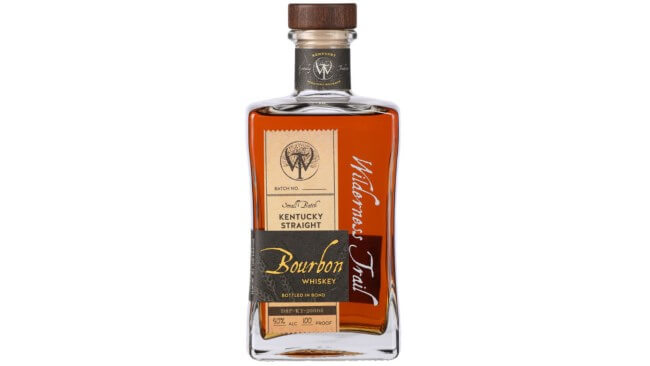Tasting: 3 Core Bottled in Bond Whiskeys from Wilderness Trail (Bourbon, Rye)
Photos via Wilderness Trail Distillery
It’s a little weird now, to think back to how much smaller and more insular the world of American whiskey was at the start of the 2010s. Back then, package store shelves were dominated by the huge legacy Kentucky bourbon distilleries that had been in operation for decades, with only a smattering of brands available from a handful of craft distilleries. Many young distillers were just getting their feet under them, but were constrained by the unavoidable time constraints of making aged whiskey: It takes years to achieve a product worth drinking. There weren’t even many brands from non-distiller-producers (NDPs) in those days, because the bourbon boom hadn’t yet made that an attractive business model. This was the world that Wilderness Trail Distillery was born into, right on the cusp of the American whiskey and cocktail renaissance. Suffice to say, they picked the right time to start distilling.
Now, a decade and change later, the scene has become almost unrecognizably more vast and complex. An entire generation of small, independent distilleries has come of age, with major players in Kentucky such as Bardstown Bourbon Co. and New Riff laying the foundation of a modern generation of whiskey producers. But Wilderness Trail was there even earlier, infusing new ideas and technology into the industry largely thanks to the background of co-founders Pat Heist and Shane Baker in biotech and fermentation science. They helped to lay the model for small distilleries with bigger aspirations to sell well-aged whiskey on a national level.
And yet … I’ve never really tasted it! Yes, for whatever reason, Wilderness Trail has been one of those inexplicable “blind spots” for me over the years. We all have them–the companies and brands that just manage to slip through the cracks thanks to a lack of availability or opportunity. For whatever reason, I just never got around to tasting the bottled-in-bond bourbons and rye whiskeys that steadily poured from this distillery. I always told myself that I would get around to it eventually, and that I would compile a tasting for Paste when I did, but for years that tasting remained on a back burner. Now, it’s time to finally do the thing.
In terms of its products, Wilderness Trail is known for a few things. For one, they utilize a sweet mash process rather than the more common sour mash, partially for reasons of practicality as a small distillery, but also because they believe their higher-pH distillate results in a smoother, more gentle mouthfeel. Likewise, the company is known for waiting to release all its flagship whiskeys until they have achieved Bottled in Bond status. This ensures that all current Wilderness Trail products are at least 4 years old, and bottled at 50% ABV (100 proof) or more.
So with that said, let’s get to tasting.
Wilderness Trail Bottled in Bond Bourbon (High Rye)
MSRP: $55

It’s actually a little bit difficult to tell the company’s two core bottled in bond bourbons apart, at least at a glance. Whiskey geeks will know that the black label denotes the brand’s classic, rye-based bourbon, while the yellow label is the wheated bourbon, but I can’t help but think that for the average consumer it would probably be helpful for the front label to make this more explicit. Regardless, this one is made from a high-rye mash bill of 64% corn, 24% rye and 12% malted barley, and is aged in toasted and #4 charred barrels at a low barrel entry proof of 110. All Wilderness Trail whiskey is matured on the company’s 168-acre campus and six rickhouses.
On the nose, this bourbon features a pretty classic bouquet–caramel candies, pronounced herbal rye, pepper, floral vanilla and traces of wood fire and lumber. It feels modestly aged, with elements of both youth and oncoming greater maturity. On the palate, tit initially displays honey sweetness and assertive rye spice, along with mixed peppercorn, brown sugar and mint, before moving in a more drying dimension. A certain charred astringency takes on greater presence over time, drying out each sip somewhat more than expected. I haven’t tasted the older expressions that Wilderness Trail has released, but I’m curious how this quality will change in some of the premier expressions they’ve subsequently released, such as their 8-year-old Bottled in Bond, which uses the wheated bourbon recipe.
Wilderness Trail Bottled in Bond Bourbon (Wheated)
MSRP: $55

The company’s wheated bourbon is reportedly aged between 5-6 years, displaying the growing maturation of Wilderness Trail’s whiskey stocks that they’ve been laying down since 2012. Its recipe is a mirror image of the rye bourbon mash bill, at 64% corn, 24% wheat and 12% malted barley, although this is a notably high percentage of wheat for a wheated bourbon. Like the previous whiskey, this also favors a low barrel entry point to 110 proof.
On the nose, this whiskey is pretty dramatically different from the rye bourbon recipe, displaying more vivacious fruit and baking spice notes in particular. I’m getting cherry and slightly tart blackberry, along with gingerbread, cinnamon and the suggestion of molasses cookies or toasted panela sugar. On the palate, this enters soft and sweet, with lots of brown sugar cinnamon and toasted oak spice. I’m getting cherry cordial, clove and something particularly reminiscent of cola spice as well. This drinks with the ease and approachability that many consumers expect from a wheated bourbon.
Wilderness Trail Bottled in Bond Rye Whiskey
MSRP: $55

The company’s Kentucky rye whiskey is made from a particularly interesting mash bill of 56% rye, 33% corn and 11% malted barley, effectively splitting the difference between old-school Kentucky ryes and more modern, high-rye influences. Notably, the company uses an extremely low barrel entry proof here, from 100 to 105 proof, a far less efficient method that they clearly believe results in superior flavor extraction. Even by the quickly growing popularity of low barrel entry proofs, this is really low, and one couldn’t really go any lower while wanting to release a bottled in bond product.
On the nose, this is a very bold, herbal rye indeed–the nose is explosive and punchy, with big notes of caraway-seeded rye bread, peppermint, florals, dark chocolate and spicy oak. In particular, the mint is quite pronounced and pleasant, like freshly expressed sweet mint oils. On the palate, you again get a big explosion of rye, caraway, pepper and rye bread with honey. There’s a more savory herbs de Provence note, with a resinous hint of juniper berry as well. The rye grain is just very expressive here, and it’s almost a surprise to see that this isn’t a rye whiskey with 90% or more rye in the grist. The corn, meanwhile, has given it a modest sweetness that pairs very well. All in all, this feels like a great workhorse cocktail rye that will shine through in all sorts of classic cocktail applications.
Jim Vorel is a Paste staff writer and resident beer and liquor geek. You can follow him on Twitter for more drink writing.







































